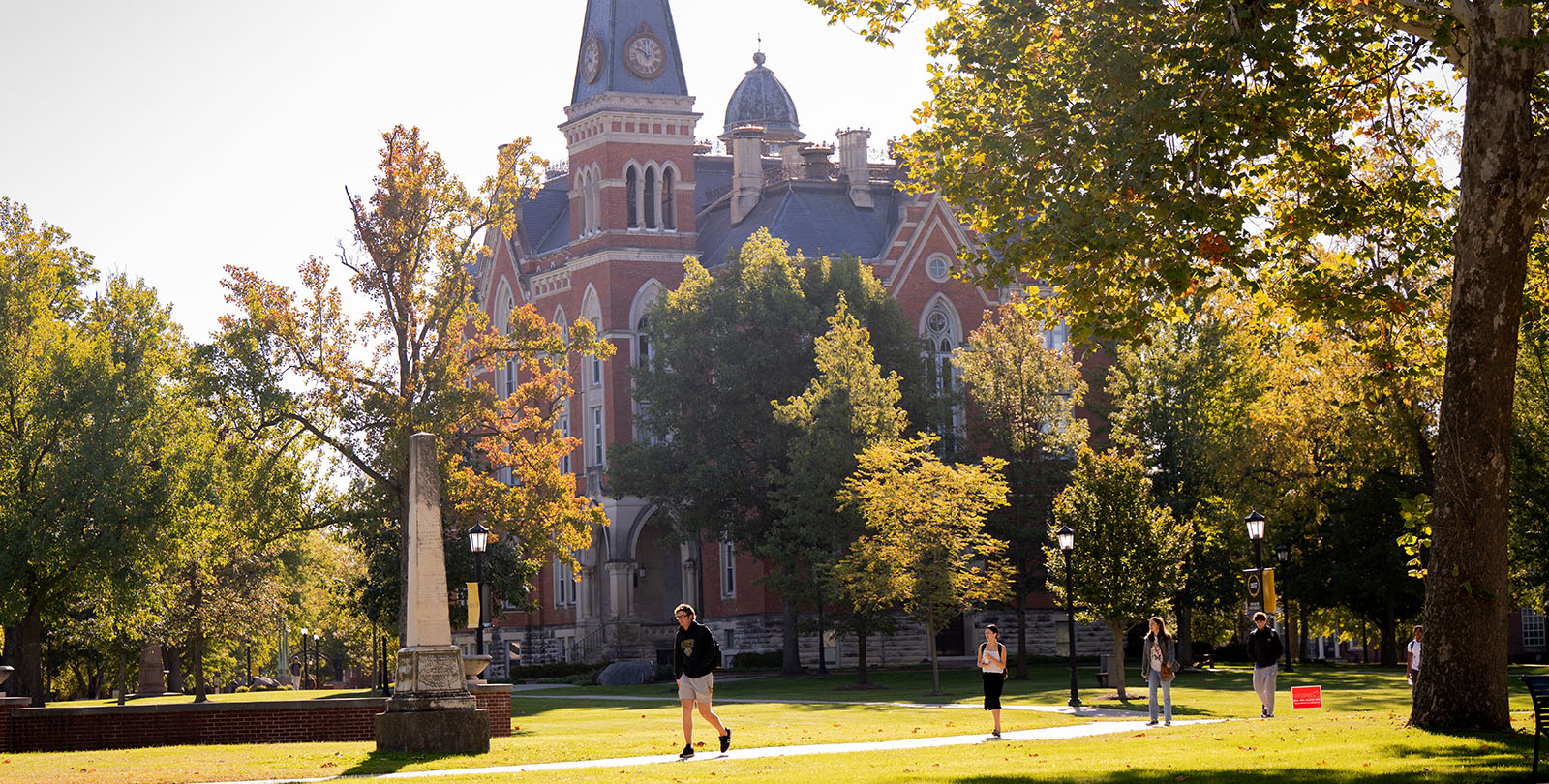Master Plan for DePauw Nature Park Unveiled
March 1, 2005
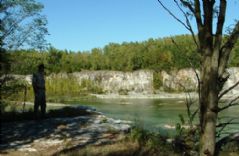 March 1, 2005, Greencastle, Ind. - A welcome and activities center, a large outdoor amphitheater and a retreat center are among the items included in a master plan for the DePauw University Nature Park. Released today and designed by Mansur Developers, the plan explores possible uses for the the 481-acre site which is located one-third of a mile from the western edge of the DePauw campus and is accessible via a short walk.
March 1, 2005, Greencastle, Ind. - A welcome and activities center, a large outdoor amphitheater and a retreat center are among the items included in a master plan for the DePauw University Nature Park. Released today and designed by Mansur Developers, the plan explores possible uses for the the 481-acre site which is located one-third of a mile from the western edge of the DePauw campus and is accessible via a short walk.
"This is an exciting day for DePauw and its neighbors in Greencastle and surrounding communities," says DePauw President Robert G. Bottoms. 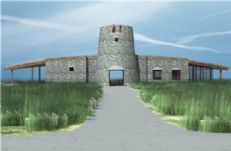 "Since September 2003, when we announced the generous gift that made the Nature Park possible, faculty, students, staff and administrators have been meeting, planning and, most importantly, imagining what this site might be like. Mansur was able to take the best of those ideas and create a plan which serves as a blueprint as we go forward. Many of the pieces of this plan will become reality slowly, over time; others are already in development. Some could remain 'wish list' items for the foreseeable future. I'd like to thank everyone who contributed ideas to the process."
"Since September 2003, when we announced the generous gift that made the Nature Park possible, faculty, students, staff and administrators have been meeting, planning and, most importantly, imagining what this site might be like. Mansur was able to take the best of those ideas and create a plan which serves as a blueprint as we go forward. Many of the pieces of this plan will become reality slowly, over time; others are already in development. Some could remain 'wish list' items for the foreseeable future. I'd like to thank everyone who contributed ideas to the process."
The DePauw Nature Park opened to the public in September 2004. Already in place are ten miles of trails that wind through the property and along Big Walnut Creek as well as outdoor  classrooms and a small outdoor amphitheater. Currently under construction is the approximately 3800-square foot laboratory building, Manning Environmental Field Station, which will facilitate the teaching of geoscience and biological classes and will include laboratories for environmental science, environmental biology, and ecology. There are also plans to create a canoe launch and develop natural areas (prarie and wetland).
classrooms and a small outdoor amphitheater. Currently under construction is the approximately 3800-square foot laboratory building, Manning Environmental Field Station, which will facilitate the teaching of geoscience and biological classes and will include laboratories for environmental science, environmental biology, and ecology. There are also plans to create a canoe launch and develop natural areas (prarie and wetland).
The master plan includes:
- Welcome Center/Activities Center - (planned for 2005; seen above right) - with 1400 square feet of interior space and 3700 square feet of total space under the roof, this will serve as a trailhead building for groups entering the park, where they can receive orientation and plan their activities. The structure will also serve as the offices for the park ranger staff.
- Reflection Center (no development plans yet) - a place for individual and group reflections in quiet, natural settings. Variously suggested as an enclosed building or a covering without walls.
- Pavilion(s) (no development plans yet) - several proposals for pavilions which might be available for picnics or gatherings are under consideration, such as near the camping or canoe launch areas.
- Large Outdoor Amphitheater (no development plans yet) - which could possibly accommodate 300-500 persons and host outdoor theatre performances or concerts.
- Retreat Center (preliminary exploratory design work under way) - built in an environmentally sensitive manner, this building would include meeting and conference facilities suitable for groups ranging from dozens of people to hundreds. Complete development of this concept would include residential facilities as well as kitchen, dining and meeting rooms. It is envisioned that the Center will host campus, regional, corporate and national events that exceed the capabilities of other facilities on-campus or within the region.
The master plan also calls for installation of toilets and water fountains in key locations around the Nature 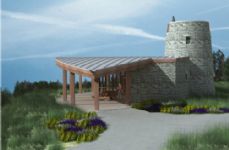 Park. A two-inch main, which delivers city water to the site, has already been installed, and electricity is provided by PSI/Cinergy. The plan suggests that on-site wastewater treatment is not possible and recommends installation of a forced sewer main which would connect to the city wastewater treatment plant. (at left is another architect's rendering of the Welcome Center)
Park. A two-inch main, which delivers city water to the site, has already been installed, and electricity is provided by PSI/Cinergy. The plan suggests that on-site wastewater treatment is not possible and recommends installation of a forced sewer main which would connect to the city wastewater treatment plant. (at left is another architect's rendering of the Welcome Center)
"The new opportunities for teaching and research, of developing connections between different disciplines, and the opportunities for community outreach the Nature Park will provide, are enormous," says Wade N. Hazel, professor of biology at DePauw and a 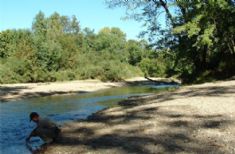 key architect of the vision for the Nature Park. "The park will also enhance DePauw's abilities to attract students interested in environmental issues. I'm confident that, years from now, the investments in the Nature Park will turn out to be some of the wisest the University has ever made."
key architect of the vision for the Nature Park. "The park will also enhance DePauw's abilities to attract students interested in environmental issues. I'm confident that, years from now, the investments in the Nature Park will turn out to be some of the wisest the University has ever made."
The park is already widely used by DePauw's science classes, and has been host to countless groups of area schoolchildren. Between 1917 and 1977, the Nature Park was the site of a limestone quarry. Limestone rock in the quarry began formation approximately 350 million years ago from the remains of animals living on the bottom of an inland sea that covered the area. The layers of remains are the basis of the rock layers observed in the quarry 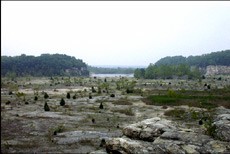 walls. The observant visitor can locate fossil crinoids, brachiopods and bryozoans in the rock.
walls. The observant visitor can locate fossil crinoids, brachiopods and bryozoans in the rock.
"Since DePauw acquired the property, at least 20 student-faculty research projects have been launched to begin studying the biological communities and geological phenomena in and around the quarry," says Dana Dudle, assistant professor of biology and coordinator of DePauw's Women in Science program. "The projects range from studies of primary succession to the development of a conservation-based curriculum for local sixth graders to the investigation of the feasibility of creating wetland habitat in one of the Nature Park's abandoned fields. I am excited about the variety of opportunities the park has opened up for biological research and environmental education, and I look forward to working out at the quarry for many years."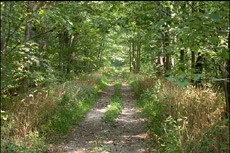
Hanson Aggregates, which mined the quarry on the site, donated 280 acres of the land, and is leasing the remaining 178 acres to the University for $1 annually for ninety-nine years. DePauw acquired 23 acres of adjacent property to increase the total to 481 acres.
The DePauw University Nature Park is open to the public from dawn to dusk, seven days a week. Camping is permitted only in designated areas and with authorization. For more information, contact Brien Holsapple, park ranger, at (765) 653-5139, or the Public Safety Office at (765) 658-4261. Visit the DePauw Nature Park online by clicking here.
